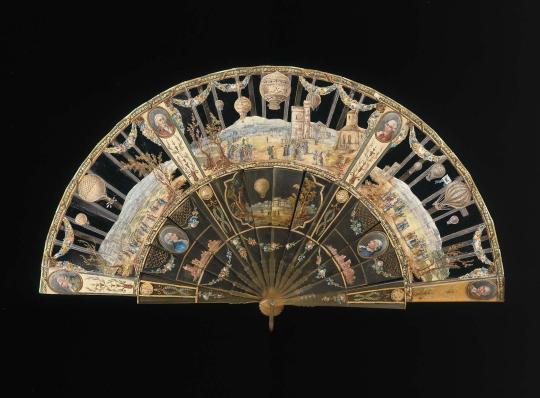#archaeology
Explore tagged Tumblr posts
Text



The Ancient Roman House of the Birds, named for its mosaic with 33 different bird species.
Italica, Spain
Dec. 2019
#italica#españa#spain#mosiac#ancient art#travel#original photography#photographers on tumblr#photography#lensblr#architecture#bird#ancient rome#ancient roman#roman architecture#ancient architecture#archaeology#wanderingjana
820 notes
·
View notes
Text

The Sphinx of the Naxians, 560 BC.
Archaeological Museum of Delphi, Greece
417 notes
·
View notes
Text






Roman Oil Lamp Selection 2, Kendal Museum, Cumbria
#roman empire#romans#roman lamp#roman#roman society#ancient crafts#ancient living#ancient culture#lamp#pottery#pottery design#archaeology#Kendal Museum#Cumbria
110 notes
·
View notes
Text










Ancient Egyptian Jewellery, Lapis Lazuli Amulets
From left to right: 1 Frog Amulet 664–332 B.C. 2 Heart Amulet 664–334 BCE 3 Lion and Bull Amulet 522–343 B.C. 4 Cat Amulet 1550–1295 B.C. 5 Ba Amulet 664–332 B.C. 6 Lion Amulet 1550–1295 B.C. 7 Fish Amulet 1550–1295 B.C. 8 Female Sphinx Amulet 1981–1550 B.C. 9 Harpokrates Amulet ? 1850–1640 B.C. 10 Falcon Amulet 664–332 B.C.
#ancient history#antiquity#ancient civilizations#ancient art#jewelry#lapis lazuli#history#antiquities#jewellery#ancient egypt#antiques#ancient jewelry#pendant#egyptology#egypt#ancientegyptianjewellery#amulet#collections#archiveofmyown#archaeology#artefact
1K notes
·
View notes
Text

Paracas textile (Peru)
#consciousness#light#peru#ascension#energy#alchemy#magic#esoteric#occult#aliens and ufos#enlightenment#engineering#architecture#agriculture#kundalini awakening#kundalini energy#pyramids#ancient#archeology#archaeology#archetypes#godhood#witchcraft#south america
145 notes
·
View notes
Text

Roman marble statue of a pair of dogs, 2nd century AD
British Museum
6K notes
·
View notes
Text
From the classics file
Lorenza D'Alessandro during the restoration of the tomb of the great Egyptian queen Nefertari, wife of Ramses II, who ruled in the 13th century BCE.

77 notes
·
View notes
Text

Folding fan depicting scenes from the history of ballooning
French; c. 1785; reformed [horn] protein sticks and skin leaf painted with gouache, diamond paste studs in rivet, brass ring; maximum open of 50.5cm.
Currently in the collection of the Museum of Fine Arts, Boston, accession no. 43.2078
#archaeology#art#textiles#isaac.txt#museum of fine arts#mfa boston#modern history#baroque#fashion history
695 notes
·
View notes
Text

Temple of Hephaestus, Ancient Agora of Athens, Greece
One of the masterpieces of ancient Greek architecture in Athens.
#greece#architecture#travel#photographers on tumblr#europe#athens#ancient greece#temple#archaeology#temple of hephaestus#hephaestus#greek temple#ancient temple#ancient agora#wanderlust#landscape#plaka#attica#central greece#mainland
1K notes
·
View notes
Text

Today's Flickr photo with the most hits: a thermopolium (fast food joint), in Pompeii.
13 notes
·
View notes
Text


MAENAD's HEAD: Etruscan Antefix from Cerveteri ‘Painted terracotta antefix moulded with the head of a maenad in a shell-like frame.’ [Txt ©BM] Terracotta About 400-300 BC Inv. 1893,0628.2 Featured in the ANTIQVVS Magazine Autumn 2024 Issue
The British Museum, London | BM [First fl., Room 71 'Etruscan World']
Web : https://www.britishmuseum.org
IG, YT, X, FB : @ britishmuseum
LiN : https://www.linkedin.com/company/the-british-museum
BM | Michael Svetbird phs ©MSP/Antiqvvs | 17|08|24 5000X4200 600 The photographed object is collection item of BM [Non-commercial fair use | No AI training | Author rights apply | Sorry for the watermarks]
.
#cerveteri#london#the british museum#british museum#museum#etruria#etruscan#etruschi#antefix#antefixes#ancient#architectonic#architecture#art#sculpture#classical#antiquity#mythology#archaeology#art history#heritage#maenad#museology#culture#antiquities#museum photography#art photography#archaeology photography#antiqvvs#michaelsvetbird
28 notes
·
View notes
Text

Skara Brae Buddo, human figure carved from whalebone, dated c. 2,900 – 2,400 BC. Discovered at Skara Brae, a Neolithic settlement located in the Bay of Skaill on the Mainland, an island in the Orkney archipelago of Scotland.
20K notes
·
View notes
Text
An archaeological find in the Columbretes islets:


The Columbretes are a group of islets located 50 km (31 miles) off the coast of Castelló de la Plana, in the Valencian Country.
When a group of workers were doing maintenance on the canals that take rain water to a cistern, one of them found a little piece of metal. This worker has a strong interest in archaeology and numismatics, so when he saw it he recognised it was a piece of bronze or copper cut with wire cutters. He started looking around and found more, and eventually found a metallic disk which is the step before turning it into a coin. In the area, he found 33 of them.
He alerted the local museum (Museu de Belles Arts de Castelló), who sent an archaeologist to confirm it. They have studied the findings and have dated them in the 17th century. The pieces were taken to the University of València, who has studied them in the laboratories and has confirmed that none of them were yet coined, but all of them were ready to be.
Even though there's little information, this finding shows that there was a workroom of counterfeit money in the 17th century. Considering the historical context, experts say it's likely that they were pirates. 🏴☠️
This discovery might change what we knew about life in the islets. Though the presence of pirates around that area of the coast was well known, until now it was believed that humans didn't settle in the islets until the 19th century, when the lighthouse was built. This new finding shows that there might have been a small settlement before, but it's not enough evidence to say whether they were settled in the islets or they just went there for short periods of time.
Source.
#història#arqueologia#illes columbretes#país valencià#castelló de la plana#mediterranean#pirates#archaeology#archeology#Valencian country#europe#history#early modern history#early modern period
20 notes
·
View notes
Text





Roman Oil Lamp Selection 3, Kendal Museum, Cumbria
#romans#roman empire#roman#roman lamp#archaeology#ancient crafts#ancient living#ancient culture#pottery design#pottery#lamp#Kendal Museum#Cumbria
60 notes
·
View notes
Text

Cultura: Valles de tlaxcala
Tipo: figurillas
Técnica: Modelado
Provenience unknown, possibly looted
MNA
16 notes
·
View notes